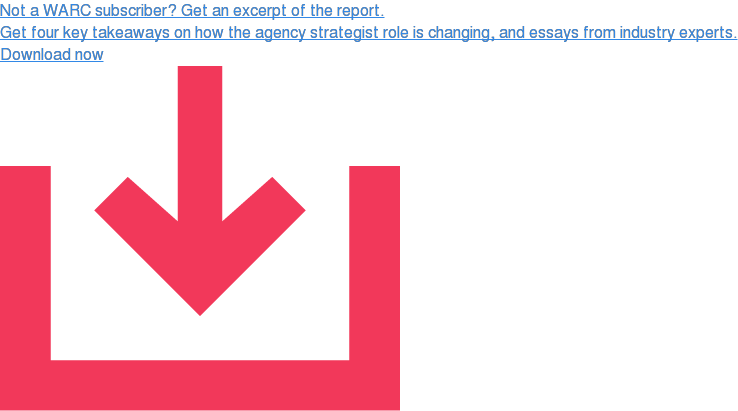This commentary appears in WARC’s new ‘Future of Strategy’ report, based on a global survey of senior agency planners. The report covers the current state of the strategic discipline, future opportunities and challenges, and guidance on building the planning team of the future.
Over the course of my career I’ve seen pretty much all the various combinations of agency seating arrangements. And there have been a lot of them.
Departments by floor. Brand teams in ‘hubs’. Everybody jumbled up. Completely open plan. Communal work benches. Hot desking. Lots of individual offices (though network finance mandates on ‘packing rates’ mean that this is more and more rarely seen these days – which is probably a good thing, to be honest).
As a result, I am now convinced that the best way for planners to sit is as a group, together, separate from the other agency teams. This is for a number of reasons.
Planners tend to work alone
Planning can be quite a solitary activity – unlike creative people who work in teams and account people who normally (even now) come in a squad, most accounts only have one planner day to day. It is easy to feel a bit alone sometimes. Sitting apart from other planners can only increase this feeling of isolation.
Helping the flow of knowledge
Planners have an enormous amount to learn from each other, especially in these fast-changing times. Sitting as a group helps generate a flow of knowledge that quickly becomes natural and easy; this also helps to breaks down barriers between individual specializations and levels of experience and increases the power of the collective.
Encouraging risk-taking
In my view, the best planning comes from the confidence to have an opinion, to take risks, to suggest ideas and solutions that may at first seem to be on the wrong side of bonkers. Sitting with other planners, testing your ideas on them and talking them through these ideas informally, can encourage you to go live with them for real.
Helping conversations
This one is a bit of a cliché – but the hive mind is a thing. Even among a group of six or ten planners. Using Google is OK as a very simple research tool, but it’s no substitute for asking direct questions to people with relevant experience. And asking these questions face to face is better than doing it online. Even with email, messaging and the rise of using collaborative tools like Trello, Slack or Facebook at work, nothing is quite as useful as sitting in close proximity to other people who do what you do, day in, day out.
Collaborative, not competitive
Planners don’t suffer from the competitive issues that creatives can (understandably) sometimes face. By and large, we don’t lose if we share our thinking. Plus, if planners were to be Myers-Briggsed – yes, I know that psychometrics experts ridicule the MBTI, but let’s stick with it for now as it’s so well-known – my guess would be that the vast majority of us would be classed as ‘introverts’. Our egos are not as obviously on show, which means that collabration and building on each others’ ideas come more naturally to us.
I like to think of planning less as a department and more as a community. In my experience, planners thrive when they sit together. And when planners thrive, so does planning. And when planning thrives, so does the agency.


